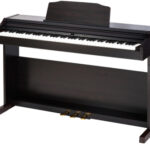Jazz keyboard improvisation is like painting with sound, where each stroke can lead to a new, unexpected hue. It's an art form that's as exhilarating as it is challenging, offering musicians a canvas to express their deepest emotions and wildest ideas. From the smoky bars of New Orleans to the chic lounges of New York, jazz keyboardists have been captivating audiences with their spontaneous creations for decades.
Diving into the world of jazz keyboard improvisation, one quickly discovers it's not just about hitting the right notes; it's about telling a story. Each improviser brings their own flavor to the mix, drawing from a rich palette of techniques to craft solos that are truly their own. Whether you're a seasoned pianist or just starting out, exploring these techniques can open up a whole new world of musical expression.
Understanding Jazz Keyboard Improvisation
Jazz keyboard improvisation is often compared to a dialogue. Each musician listens and responds to the other, creating a conversation that's both dynamic and fluid. This exchange is not just among the players but also with the audience, making each performance unique and ephemeral. The essence of jazz improvisation lies in its spontaneity and the musician's ability to express emotions and thoughts through their instrument in real-time.
At the heart of jazz keyboard improvisation is the concept of music theory. Understanding scales, chords, and progressions provides the foundational language for these musical conversations. However, knowing the rules is only the starting point. Great jazz pianists like Thelonious Monk and Bill Evans became maestros by bending and stretching the conventional rules to articulate their unique voices. For instance, Monk's use of dissonant chords and unexpected pauses became his signature, teaching us that silence can speak as loudly as a flurry of notes.
Improvisation can also be seen as painting with sound. Just as a painter uses a palette of colors to create imagery, a jazz keyboardist uses the keyboard to paint auditory landscapes. This sonic painting doesn't come out of nowhere; it's deeply rooted in a rich tradition of jazz history and culture. Familiarity with jazz standards and the work of past giants provides a canvas on which musicians can sketch their improvisations. It's a balance between paying homage to tradition and forging a personal path through uncharted musical territories.
Technique is undoubtedly a key element in unlocking the full potential of jazz improvisation. Mastery of the keyboard through scales, chord voicings, and rhythmic patterns allows musicians to translate their intuitive impulses into coherent musical phrases. Techniques such as swing feel, arpeggios, and the use of dynamics are tools that add depth and emotion to the musical conversation. They're the vocabulary through which musicians articulate the stories they wish to tell.
Another critical aspect is the understanding and implementation of modes. Modes offer a variety of tonal landscapes from which to draw inspiration. For example, the Dorian mode can impart a soulful or melancholic mood, while the Lydian mode might evoke a sense of ethereal, floating calm. Knowing when and how to use these modes effectively can elevate the narrative quality of an improvisation, making it more compelling and resonant with listeners.
Essential Scales and Modes for Jazz Improvisation

Jazz improvisation on the keyboard is as much about the scales and modes as it is about the emotion and connection with the audience. Knowing which scales to use and when can elevate a performance, transforming it from good to unforgettable. In this part of the article, we'll dive into some of the essential scales and modes that form the backbone of jazz improvisation.
Major Scales and Mixolydian Mode
At the heart of many jazz improvisations are the major scales. These scales are fundamental, not just in jazz, but in understanding Western music as a whole. However, what sets jazz apart is how these scales are used. By incorporating the Mixolydian mode, which is essentially a major scale with a flattened seventh, musicians can give their performances a distinctly jazzy feel. This mode adds a bit of tension and color, making it perfect for solos.
Dorian and Phrygian Modes
The Dorian mode is another favorite among jazz keyboardists. It has a minor third and seventh, which gives it a slightly melancholic sound, ideal for certain types of blues and modal jazz. Similarly, the Phrygian mode, known for its Spanish-flamenco feel due to its minor second, brings an exotic flavor that can make improvisations stand out.
Blues and Pentatonic Scales
The blues scale is indispensable in jazz improvisation. It's essentially a minor pentatonic scale with an added ♯4 or ♭5, known as the "blue note." This scale is the backbone of the blues genre and is widely used to infuse solos with soulful, melancholic tones. Pentatonic scales, both major and minor, are also crucial. Their simplicity and versatility make them a favorite tool for improvisation, laying down melodious lines that are easy to listen to and highly expressive.
Chord Voicings and Progressions in Jazz Keyboard

When diving into the world of jazz keyboard improvisation, understanding chord voicings and progressions is like discovering a treasure map. These elements are the backbone of jazz's harmonic richness and are essential for any keyboardist looking to master the genre. Chord voicings refer to how the notes of a chord are spread out or arranged on the keyboard. The right voicing can turn a simple chord progression into a captivating musical journey.
Jazz keyboardists often explore beyond basic triads, delving into seventh, ninth, or even thirteenth chords to achieve that quintessential jazzy sound. Voice leading, or the smooth transition between the notes of different chords, becomes crucial here. It's all about making the chord changes sound fluid and coherent, creating a conversation between the chords.
One of the most celebrated aspects of jazz chord progressions is their cycle of fifths movement. This progression moves chords in intervals of a fifth, creating a sense of anticipation and resolution that is both satisfying and intriguing to the listener. The II-V-I progression, in particular, stands out as a fundamental building block in jazz compositions, providing a harmonic framework that's both versatile and dynamic.
Experimenting with chord extensions and alterations offers a pathway to unique sounds and emotions. For instance, a dominant seventh chord might be modified with a sharp ninth or a flat thirteenth to add tension and complexity, begging for resolution that can lead the improvisation in new directions. Jazz keyboardists leverage these harmonic tools not just for their theoretical intrigue but for their profound ability to convey mood and story.
- Use of Inversions: Playing around with different inversions of chords can help in creating smoother transitions and maintaining interest throughout the improvisation.
- Experiment with Extensions: Adding notes beyond the basic triad or seventh chord can open up a whole new palette of sounds. Try incorporating ninths, elevenths, and thirteenths.
- Practice Voice Leading: Pay attention to how the voices within the chords move from one chord to the next. Aim for minimal movement for a sleeker sound.
- Explore Modal Interchange: Borrowing chords from parallel modes can introduce unexpected colors and emotional shifts within a progression.
Creating Melodic Lines and Phrasing Techniques

One of the most exhilarating aspects of jazz keyboard improvisation lies in the creation of melodic lines that breathe life and narrative into a performance. Melodic improvisation is not just about playing the right notes; it's about telling a story, evoking emotions, and engaging the listener through dynamic phrasing and expressive techniques. To excel in crafting captivating melodic lines, jazz keyboardists delve into various approaches that enrich their musical vocabulary.
Firstly, they focus on scale mastery and modal exploration. Understanding and having fluidity in both traditional and exotic scales is foundational. Jazz musicians often lean on modes, which are scales derived from the major scale but starting on a different note, to create unique sounds and feelings in their solos. For example, the Dorian mode provides a minor feel with a bright, raised sixth that adds a unique color perfect for certain jazz contexts.
Phrasing, the art of shaping musical sentences, is where true personality shines through in jazz improvisation. Effective jazz keyboardists utilize techniques such as:
- Call and response: This ancient technique creates a dialogue within the music, where one phrase (the call) is answered or commented on by another (the response), often mimicking conversational flow.
- Syncopation: Emphasizing off-beats or unexpected beats in the music, syncopation is key to adding groove and interest to solos.
- Dynamic variation: Playing with the volume and intensity of notes and phrases can enormously impact the emotional effect of a performance.
Another critical strategy for enriching melodic improvisation is motivic development. This involves taking a short musical idea or motif and evolving it throughout the solo. Alterations can include changing the rhythm, altering intervals, inverting the motif, or transposing it to different pitches. This technique not only provides cohesion to a solo but also enables the musician to explore expansive musical landscapes while staying anchored to a thematic idea.
In crafting captivating melodic lines, it's also essential for jazz keyboardists to:
- Listen extensively to great jazz players and analyze their solos for melodic construction and phrasing nuances.
- Practice improvisation regularly, experimenting with different scales, modes, and rhythmic patterns.
- Record and critique their improvisations, noting areas for improvement and elements that work well.
Advanced Jazz Keyboard Improvisation Tips

Moving deeper into the realm of jazz keyboard improvisation, artists often search for ways to elevate their performance. As musicians journey beyond the fundamentals, the development of a unique voice becomes paramount. To achieve this, certain advanced techniques and concepts are indispensable.
Polyrhythms and Cross-Rhythms play a pivotal role in enriching the rhythmic complexity of improvisations. By superimposing different rhythms or patterns over one another, keyboardists can create intriguing and unexpected rhythmic textures. It’s not just about playing more notes; it’s about weaving a richer tapestry of sound that captivates the listener.
Exploring Extended and Altered Harmonies is another key area. Jazz thrives on harmonic complexity, and the use of extended (9ths, 11ths, 13ths) and altered (b9, #11, b13) chords can introduce a whole new dimension to the music. These harmonies provide a lush, sophisticated backdrop, against which solos can truly shine. Keyboardists often experiment with these in their left-hand chord voicings while their right hand explores melodic improvisation.
Incorporation of Reharmonization Techniques allows players to reinterpret the underlying harmonies of a piece, thus offering fresh perspectives on familiar tunes. By changing the chords or harmonies without altering the melody, artists can surprise the audience and keep the music evolving. This technique requires a solid understanding of music theory and harmony but rewards players with endless creative possibilities.
Melodic Minor and Diminished Scales shouldn’t be overlooked. Beyond the major and minor scales, these scales offer a treasure trove of melodic ideas. The melodic minor scale, for example, is versatile and can adapt its mood depending on the context. The diminished scale, with its symmetrical intervals, offers a sense of tension and release, which can add drama to improvisations.
Interaction with the Band is crucial in elevating a performance. Jazz is a conversation, and listening and responding to bandmates during a solo segment can lead to magical moments of collective improvisation. It’s not just about individual brilliance but about creating something greater as a group.
- Regularly Practice with a Metronome: This improves timing and rhythmic accuracy, especially important for mastering polyrhythms.
- Study Jazz Scores: Analyzing the scores of
Conclusion
Mastering jazz keyboard improvisation is a journey that requires dedication, practice, and a willingness to explore. By integrating advanced techniques like polyrhythms, extended harmonies, and reharmonization, keyboardists can unlock new dimensions in their playing. It's not just about the notes themselves but how they're woven into the fabric of the music, creating a dialogue with the band and the audience. Remember, the goal is to find your unique voice and express it through your instrument. So keep experimenting, listening, and learning. The world of jazz is vast and full of surprises waiting to be discovered. Happy playing!
Harlan Kilstein began playing piano during covid with no piano background at all. He taught himself how to play learning what to do and what not to do.
Today he's an advanced intermediate player and can help you grow in your skills because he learned all this on his own.








